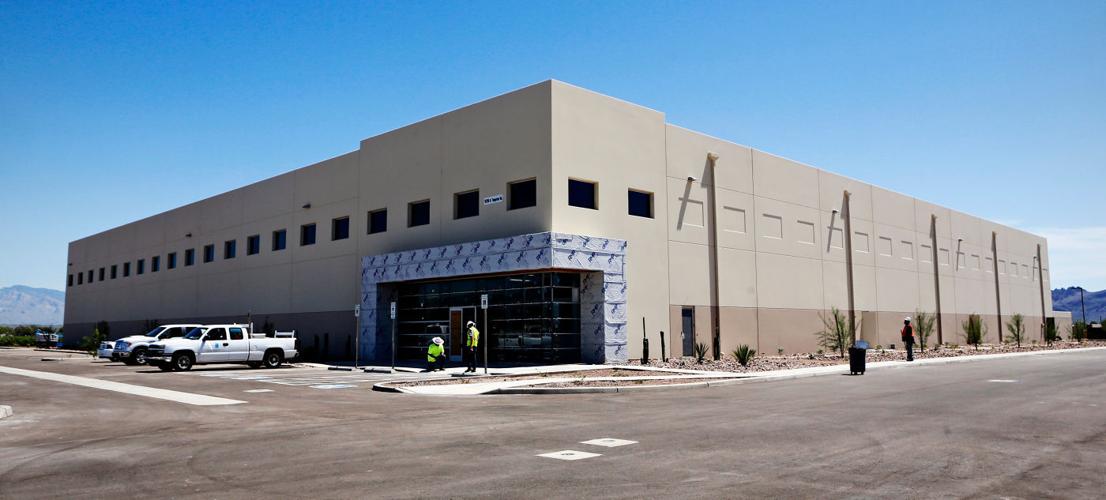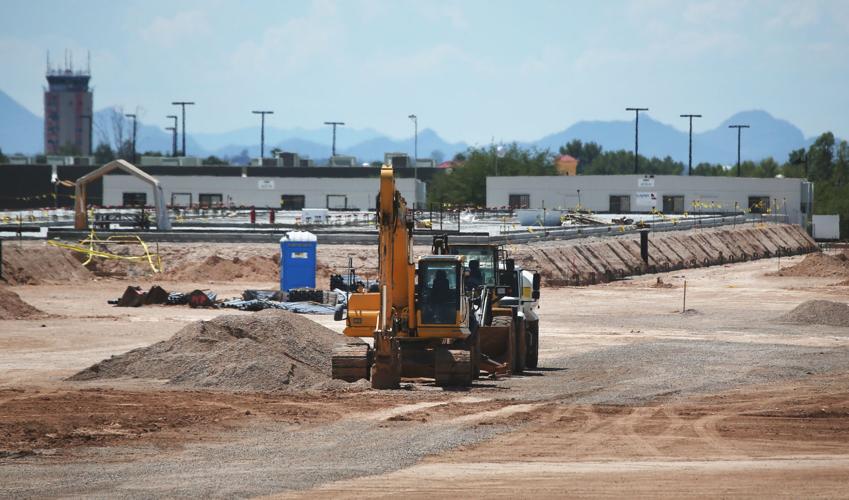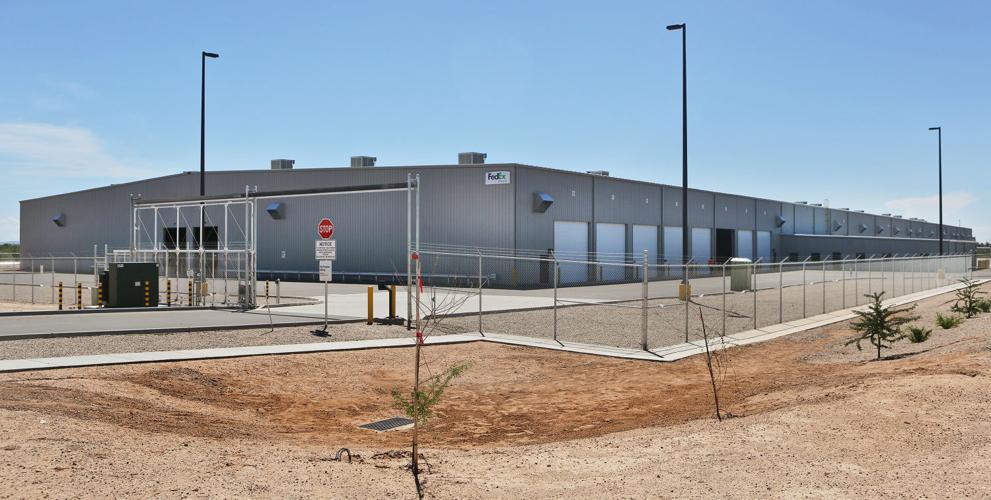The industrial market in Tucson is getting new attention from distribution companies that once snubbed the Old Pueblo for locations in California, Nevada and Texas.
Hovering at around 10 percent vacancy, industrial space around town is being absorbed and subdivided to accommodate smaller businesses, and new construction is afoot.
Regional logistics company OnTrac is expected to announce this week its plans to lease more than 56,000 square feet at Rockefeller Group Distribution Center, south of Valencia and Palo Verde roads.
Three other major distribution centers are in varying degrees of construction.
Furniture retailer HomeGoods is constructing an 800,000-square-foot distribution center in the 3600 bock of East Corona Road, near the airport.
FedEx expects to open its new 210,000-square-foot ground distribution center this fall at 7050 S. Palo Verde Road.
And Ventana Medical Systems is close to completing its 60,000-square-foot logistics and distribution center in Tangerine Commerce Park on Tangerine Road, near Interstate 10.
“From about 2008 to 2013, significant companies were not looking at Tucson,” said Rob Glaser, industrial specialist with commercial real estate company Picor. “A couple of years ago we started to see an improvement in the amount of economic development activity in the industrial market.”
He said strategic marketing on the part of the city, county and state, coupled with a healing national economy, all played a role.
“Tucson is a good place … with its proximity to interstates and Mexico, good skilled labor and minimal traffic and natural-disaster issues,” Glaser said.
Industrial landlords have been subdividing spaces in order to attract smaller tenants that have manufacturing operations in Sonora, Mexico, and need U.S. distribution space, he said.
“Small business has come back to the industrial market,” Glaser said. “There are many business parks that accommodate the 1,200- to 2,000-square-foot tenants that are making widgets, custom machining or are vendors to the manufacturing and aerospace industry.”
Glaser predicts the vacancy rate in industrial space in Tucson will drop to 8 percent within 18 months.
“We’ve got pretty good momentum going,” he said.
fast-growing FIRM moving in
OnTrac, a regional overnight package delivery service, has operations in California, Nevada, Oregon, Washington, Utah, Colorado and Idaho.
From the new Tucson facility, located in the Rockefeller Group Distribution Center, the company will offer shipping and same-day messenger services.
Mark Singerman, regional director of Rockefeller’s Arizona office, said the arrival of OnTrac will bring the center’s occupancy rate to 80 percent.
The remaining space is being eyed by other logistics companies that want to be near the airport, I-10 and I-19, he said.
“Tucson is one of our fastest-growing markets, and we are excited to be moving to the Rockefeller group facility,” said Thomas Fischer, chief financial officer for OnTrac. “Being a regional carrier, we are always looking to provide increased capabilities while reducing cost. This move will help us do that while providing delivery service to area businesses.”
OnTrac is headquartered in Chandler and among the state’s fastest-growing businesses. Terms of the Tucson lease were not disclosed. In 2014, the company began a “last-mile” delivery service in conjunction with the U.S. Postal Service.
Hiring figures were not immediately available, but employment information can be found at ontrac.com under the “News” category.
ATTRACTIONS INCLUDE INCENTIVES, GEOGRAPHY
Earlier this year, HomeGoods bought 100 acres for $9.5 million to build its distribution center.
A combined city/county incentive package totals more than $6 million over 15 years. The company plans to hire at least 400 people initially and grow to 900 workers.
The $2.4 million investment by FedEx in a new distribution center was prompted by Tucson’s geography and workforce.
“The site was chosen because of its ease of access to major highways, its proximity to customers’ distribution centers and a strong local community workforce for recruiting employees,” Nikki Mendicino, a FedEx spokeswoman, said via email.
The new facility will replace the existing 114,000-square-foot station near I-19 and Irvington Road, and the company anticipates increasing its number of employees.
“We will add to the overall area workforce as necessary to support increased demand for service,” Mendicino said.
Ventana Medical Systems, with a workforce of about 1,100 people, became the first tenant of the Tangerine Commerce Park with its 60,000-square-foot distribution center.
Company officials cited access to I-10 and being close to their Oro Valley headquarters as reasons for choosing the site.
‘We’re in THE GAME’
Job creation is the main reason for enthusiasm about the growth in the industrial sector.
“People are getting back into the game,” said Terry Lavery, an associate broker with Tucson Realty & Trust, who is also fielding calls about industrial space, especially from smaller businesses.
“I know everyone wants the grand slam,” he said of the desire to lure a major employer, “but the small businesses are really the job starters, hiring five or six people, absorbing the 5,000-square-foot spaces.
“Several of those is a different kind of grand slam.”
Cost and regulations associated with doing business in surrounding states have also helped Tucson.
“A lot of national clients are seriously considering Tucson, which is great,” said Ike Isaacson, managing director of CBRE’s Tucson office. “We’re in the game.”
Now that the local population has reached 1 million, companies know there’s a workforce ready, he said.
“That and some of the primary markets are getting so congested, competitive and expensive, such as California with its tax and water concerns,” Isaacson said. “I’m optimistic that we’re being considered; that’s all you can ask for. The rest is up to us.”
Creation of a logistics hub in Tucson is a long-told story, but action by Pima County and the city of Tucson is making it real, industry experts say.
One example is the proposed Sonoran Corridor, which would create a bypass route between Interstates 10 and 19 south of Tucson International Airport and extension of the realigned former Hughes Access Road, also south of the airport.
County officials believe the area can attract industrial and commercial growth because of proximity to the railroad and both interstates.
Another is the recent signing of a 50-year lease between the Tucson Airport Authority and the city of Tucson.
The previous lease was set to expire in 2048, and the new lease allows the TAA to offer longer-term leases to prospective tenants.
TAA’s master plan includes opening up thousands of acres of airport-owned land for commercial development to lure more cargo and cross-border freight activity.
“We are beginning to see the results of our work to identify Tucson as a trade and transportation center,” Mayor Jonathan Rothschild said.
“Our strategic geographic position makes it easy to recruit the right businesses. We are on the front end of this growth, not the end.”






